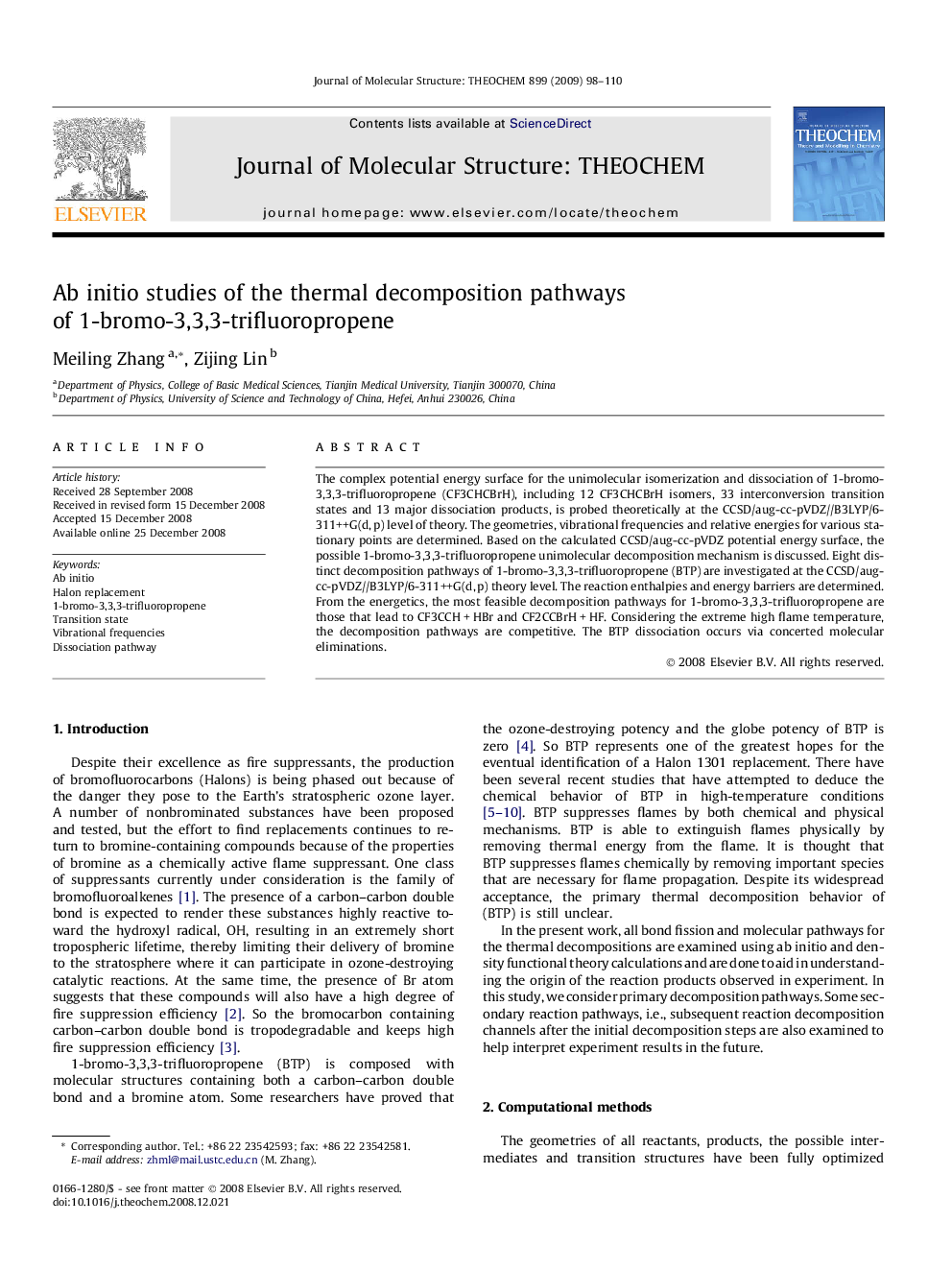| Article ID | Journal | Published Year | Pages | File Type |
|---|---|---|---|---|
| 5417516 | Journal of Molecular Structure: THEOCHEM | 2009 | 13 Pages |
Abstract
The complex potential energy surface for the unimolecular isomerization and dissociation of 1-bromo-3,3,3-trifluoropropene (CF3CHCBrH), including 12 CF3CHCBrH isomers, 33 interconversion transition states and 13 major dissociation products, is probed theoretically at the CCSD/aug-cc-pVDZ//B3LYP/6-311++G(d, p) level of theory. The geometries, vibrational frequencies and relative energies for various stationary points are determined. Based on the calculated CCSD/aug-cc-pVDZ potential energy surface, the possible 1-bromo-3,3,3-trifluoropropene unimolecular decomposition mechanism is discussed. Eight distinct decomposition pathways of 1-bromo-3,3,3-trifluoropropene (BTP) are investigated at the CCSD/aug-cc-pVDZ//B3LYP/6-311++G(d, p) theory level. The reaction enthalpies and energy barriers are determined. From the energetics, the most feasible decomposition pathways for 1-bromo-3,3,3-trifluoropropene are those that lead to CF3CCH + HBr and CF2CCBrH + HF. Considering the extreme high flame temperature, the decomposition pathways are competitive. The BTP dissociation occurs via concerted molecular eliminations.
Keywords
Related Topics
Physical Sciences and Engineering
Chemistry
Physical and Theoretical Chemistry
Authors
Meiling Zhang, Zijing Lin,
